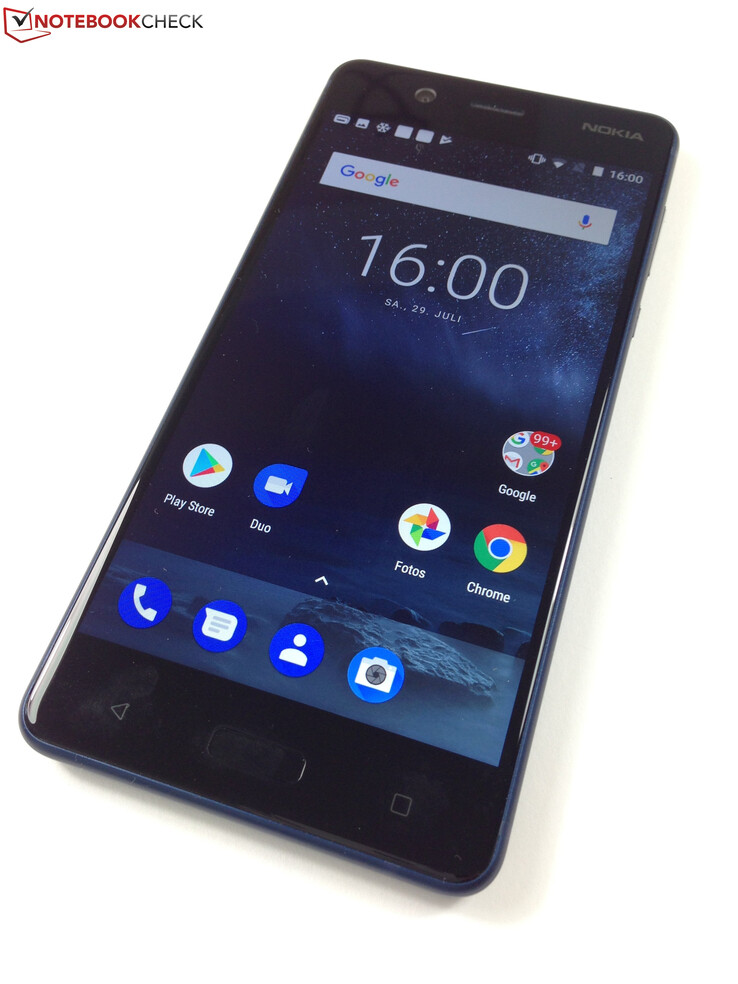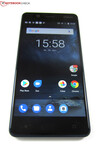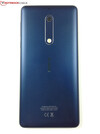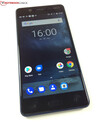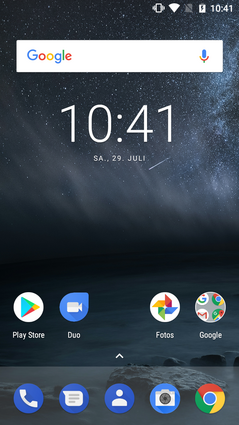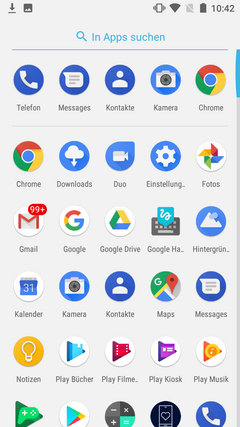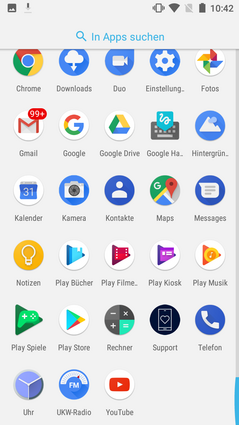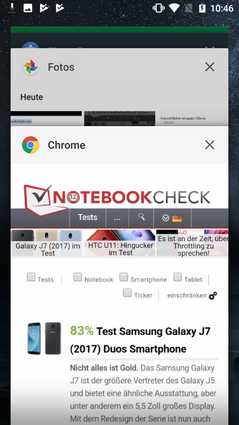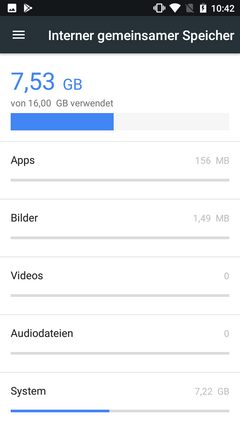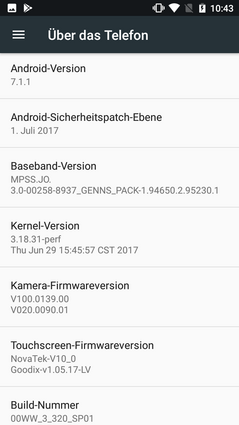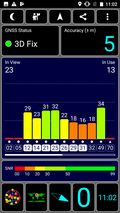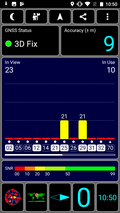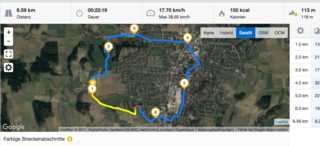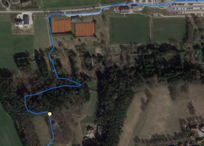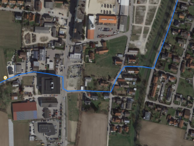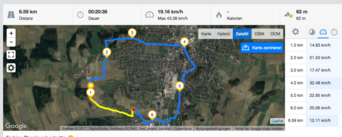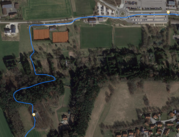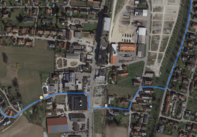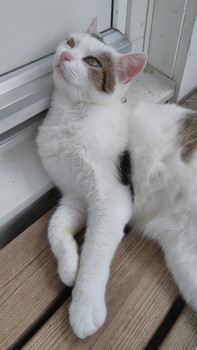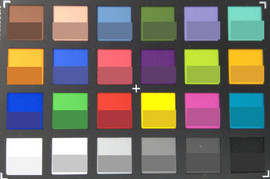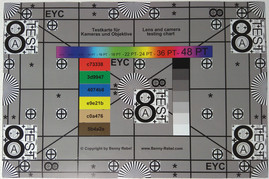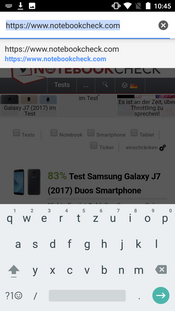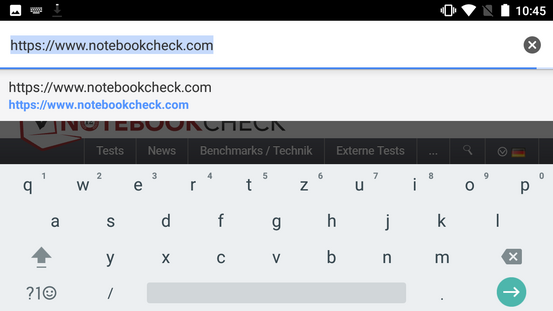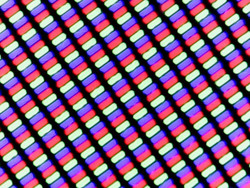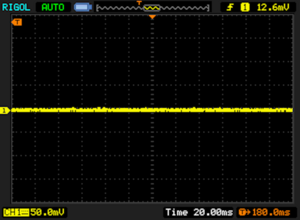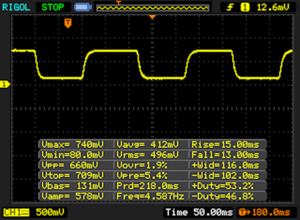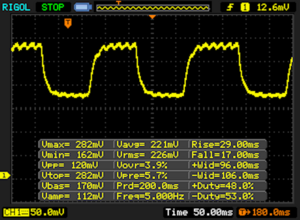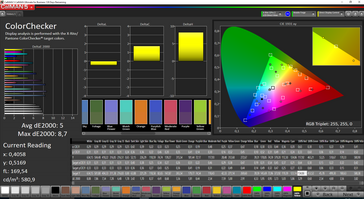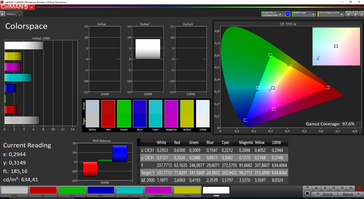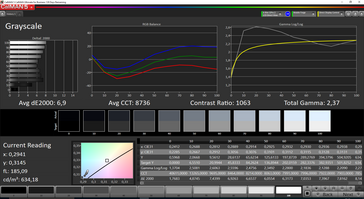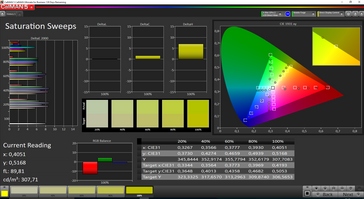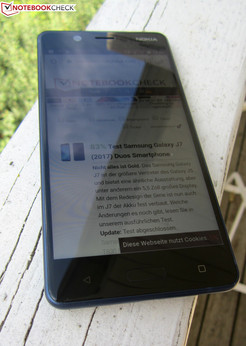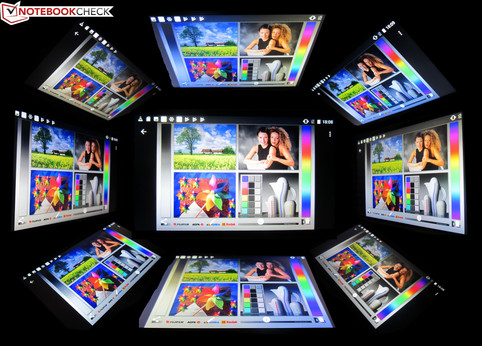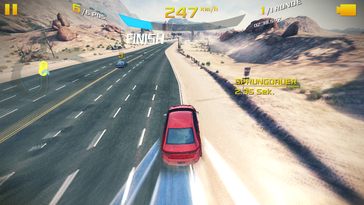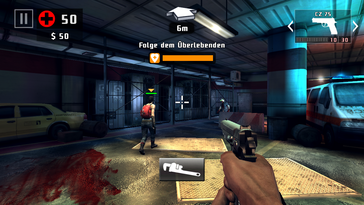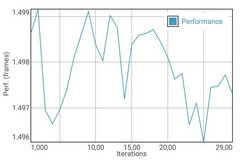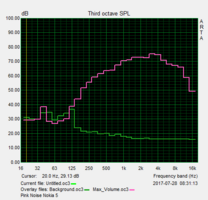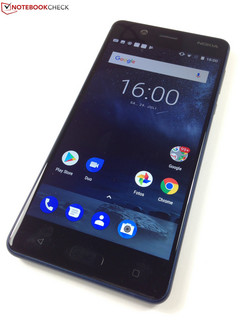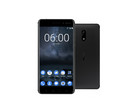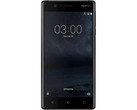Nokia 5 Smartphone Review

For the original German review, see here.
After separating from Microsoft, Nokia walks on the solo path again and has brought three new smartphones to the market for this occasion. Simply called Nokia 3, Nokia 5, and Nokia 6, the trio, officially costing between 160 and 250 Euros (~$188 - $295), serves the entry and mid-range segments. For now, Nokia leaves the premium segment outside and will probably serve it at a later point - there are already rumors about Nokia 8 and Nokia 9 as names for the coming flagship.
We have already examined the Nokia 3 and now the Nokia 5 follows. Like its siblings, our test candidate is supposed to compel as a daily companion – Nokia even confidently speaks about the "perfectly tuned Android mobile phone." One look into the specifications shows that you cannot expect the wonders from the Nokia 5 that are suggested by the marketing lingo. But the technical data also shows that you are not offered any empty promises, but you are offered a solid mix of performance and features.
With the Qualcomm octa-core Snapdragon 430, the 5.2-inch smartphone cased in aluminum bets on a solid mid-range SoC and shows 1280x720 pixels on its IPS display. Its features also include a fingerprint sensor and a 13-megapixel camera with a dual-LED flash. Under the hood are 2 GB RAM, 16 GB storage, LTE Cat.4, and with Android 7.1.1, the current version of the Google operating system.
There is a lot of competition for the Nokia 5 in the mid-range. Similar in terms of price and features are the Lenovo K6, the Samsung Galaxy J5 (2016), the Lenovo Moto G5, and the Wiko U Feel Prime.
Case
The manufacturer made a great effort in the design and workmanship of the Nokia 5. The smartphone, available in black, silver, copper, and blue colors is covered by a stylish aluminum unibody case that compels with its high rigidity in the test. It can hardly be twisted or pushed in, even when using stronger force. Only the HD display reacts at times with a slight brightening that disappears the moment we stop our attempts.
The back cover and the front are made from Corning Gorilla Glass, which covers the front completely and it has rounded corners and edges. Not only does this make the 148-gram (~0.32 lb) Nokia 5 look good, but it also lies in the hand comfortably, even though it can be slightly slippery due to its metal case. The 13-megapixel camera, together with its dual-LED flash, protrudes slightly from the back, which makes the smartphone wobble slightly on flat surfaces if you push on its long sides. But this did not seem much of a problem. The fingerprint sensor is inside the Home button.
Features
With 2 GB RAM and 16 GB storage, the Nokia 5 is not really equipped with an abundance of memory. Instead, the smartphone accepts microSD cards up to 128 GB, which can also be formatted as internal storage, allowing you to store or move apps and their data there. In the dual-SIM model you will not even lose a SIM slot, since the microSD card conveniently has its own separate slot.
The Nokia 5 supports NFC and also allows connecting external storage media and peripheral devices via USB OTG. Unfortunately, the smartphone does not have a USB Type-C connection but only has a conventional Micro-USB port that runs at USB-2.0 speeds.
Software
Android 7.1.1 runs mostly in the original version on the Nokia 5. The manufacturer preinstalled merely a support app and an app for screen wallpapers on the smartphone. The whole package uses up about 7.5 GB, which means that there is 8.5 GB of available storage in the best-case scenario. At the time of testing, the Android security patches were on the level of July 1, 2017 and thus very current.
Communication and GPS
In addition to GSM and UMTS, the Nokia 5 also communicates via LTE Cat.4. With this, it reaches maximum download rates of 300 MBit/s and upload rates of up to 50 MBit/s. With nine LTE bands including the bands 1, 3, 7, and 20 important in Europe, the smartphone covers an astonishingly wide range of LTE frequencies. Chances are good that you can receive a signal with the Nokia 5 outside of Europe as well, even if a few LTE bands are still missing for the real world traveler. In our test, the reception was good (rural Vodafone net) and reached a medium to high signal strength even indoors.
Over short distances, besides via NFC, the Nokia 5 also communicates via Bluetooth 4.1 and WLAN 802.11 a/b/g/n and thus can use the 5-GHz frequency band. The smartphone made frequent use of it when communicating with our Linksys EA8500 reference router. With transfer rates of 112 MBit/s (sending) and 122 MBit/s (receiving), the Nokia 5 is as fast as the Lenovo Moto G5. The Wiko U Feel Prime and the Lenovo K6 can only communicate in the 2.4-GHz band and therefore remain far behind.
| Networking | |
| iperf3 transmit AX12 | |
| Nokia 5 | |
| Lenovo Moto G5 | |
| Wiko U Feel Prime | |
| Lenovo K6 | |
| iperf3 receive AX12 | |
| Nokia 5 | |
| Lenovo Moto G5 | |
| Wiko U Feel Prime | |
| Lenovo K6 | |
The Nokia 5 determines its current location via GPS. In enclosed rooms, after a short wait the locating worked with an accuracy of up to nine meters, and outdoors the accuracy was up to five meters.
On our about 6.5 km (4 miles) bike test route, the smartphone performed quite well against the Garmin Edge 500 professional navigation device. Both measured exactly the same overall distance, with the Nokia 5 not diverging significantly from the ideal path even in more difficult passages such as junctions or forest areas. Therefore precise navigation is possible with the Nokia 5 without any problems.
Telephone and Call Quality
Nokia left the telephone app in its original state. Android users will immediately find their way around, since all the functions are in their usual places. In our test, during calls to land lines and mobile phones the voices of our conversation partners were reproduced naturally and clearly by the Nokia. However, our own voices were recorded slightly muffled. The same effect occurred when we turned on the speaker.
Cameras
Nokia has equipped its phone with a 13-megapixel camera, which works with an aperture of f/2.0. In addition to a phase-comparison autofocus, it is equipped with a dual-LED flash and can take pictures in complete darkness. The main camera reaches its full resolution in the 4:3 format (3120x4160 pixels), while in the 16:9 format it can only take pictures at 2160x3840 pixels (8 MP).
Considering its price, the smartphone takes really good pictures with its 13-megapixel camera. In optimal light conditions, they stand out with a high sharpness and appear very lively due to their saturated colors. In darker image areas, the camera quickly tends towards image noise, which you can only see looking closely, though. A panorama mode and a beauty mode that smooths out faces with a five-stepped filter are available as recording options. The Nokia 5 can take videos in the 1080p format at 30 images per second, achieving a decent image quality.
The 8-MP front camera (f/2.0 aperture, 84-degree viewing angle) does a good job for selfies and video chats. However, it cannot compete with the main camera, since the images always appear slightly blurry and pale. The front camera also records Full HD videos.
In addition to the regular test photos, we also examined the color accuracy and sharpness under controlled test conditions. Pictures are recorded in automatic mode and are neither processed afterwards nor is a white balance performed.
We check the color accuracy with the X-Rite ColorChecker Passport (left image). This confirms our subjective impression: The Nokia is not very accurate in the color representation but categorically lays it on a little too thick, which is not realistic, but it looks pretty.
The smartphone reproduces the test chart exactly in the center, but like practically any smartphone camera, it does not manage to also maintain the sharpness up to the image edges. This is not a big flaw, since not even professional cameras do a much better job.
Accessories and Warranty
Nokia includes a modular charger (5V, 2A), a Micro-USB cable, earphones, a tool for opening the SIM slot, and short instructions with its smartphone. On its website, the manufacturer offers a carbon and a ruggedized case, as well as set of sport earphones. At the time of writing, information on pricing or more detailed information was not available.
There is 24 months of warranty for the Nokia 5, which also extends to the battery since it is not exchangeable. For the Micro-USB cable, the modular charger, and the earphones there is only six months of warranty, though.
Please see our Guarantees, Return policies and Warranties FAQ for country-specific information.
Input Devices and Operation
The capacitive touchscreen of the Nokia 5 supports 10 simultaneous finger inputs and implements the commands quickly and precisely. The volume rocker and the power button on the right side of the case support a similarly fast operation. Although both are set into the case with a slight sideways clearance, they give exact feedback due to their clear pressure point. Also, the third physical control, the fingerprint sensor integrated into the Home button, works reliably and it unlocks the smartphone quickly.
Google's Gboard is used as the standard keyboard and can be optionally exchanged against any other virtual keyboard from the Google Play Store.
Display
The Nokia 5 displays 1280x720 pixels on its 5.2-inch IPS display, achieving a pixel density of 282 PPI. Even though this is far from the sharpness records of other smartphones, you have to look very closely to detect single pixels.
The Nokia 5 delivers a very good performance in terms of the brightness, since at an average of 634.6 cd/m² and maximum of 667 cd/m² the HD screen is extremely bright and the brightness is also evenly distributed (90%).
A more realistic and even distribution of bright and dark image areas (APL50) resulted still in a very bright maximum value of 632 cd/m². To avoid glare, a brightness sensor that is activated by default automatically adjusts the brightness to the surroundings.
However, the bright performance does have a small blemish as well: On a black background you can see halos on some edges and corners, which can become annoying in particular when playing videos. When displaying the colorful Android user interface, they are not particularly noticeable.
| |||||||||||||||||||||||||
Brightness Distribution: 90 %
Center on Battery: 630 cd/m²
Contrast: 1105:1 (Black: 0.57 cd/m²)
ΔE Color 5 | 0.5-29.43 Ø5
ΔE Greyscale 6.9 | 0.57-98 Ø5.3
97.6% sRGB (Calman 2D)
Gamma: 2.37
| Nokia 5 IPS, 1280x720, 5.20 | Lenovo K6 IPS, 1920x1080, 5.00 | Samsung Galaxy J5 2016 AMOLED, 1280x720, 5.20 | Lenovo Moto G5 IPS, 1920x1080, 5.00 | Wiko U Feel Prime IPS, 1920x1080, 5.00 | |
|---|---|---|---|---|---|
| Screen | -0% | -4% | 26% | 6% | |
| Brightness middle | 630 | 470 -25% | 289 -54% | 660 5% | 411 -35% |
| Brightness | 635 | 461 -27% | 291 -54% | 625 -2% | 386 -39% |
| Brightness Distribution | 90 | 88 -2% | 96 7% | 92 2% | 86 -4% |
| Black Level * | 0.57 | 0.38 33% | 0.29 49% | 0.36 37% | |
| Contrast | 1105 | 1237 12% | 2276 106% | 1142 3% | |
| Colorchecker dE 2000 * | 5 | 5.2 -4% | 4.7 6% | 4.9 2% | 4.3 14% |
| Colorchecker dE 2000 max. * | 8.7 | 9.5 -9% | 7.3 16% | 7.6 13% | 7.9 9% |
| Greyscale dE 2000 * | 6.9 | 5.6 19% | 3 57% | 4.8 30% | 2.8 59% |
| Gamma | 2.37 93% | 2.24 98% | 2.03 108% | 2.18 101% | 2.53 87% |
| CCT | 8736 74% | 7924 82% | 6291 103% | 7357 88% | 6589 99% |
* ... smaller is better
Screen Flickering / PWM (Pulse-Width Modulation)
| Screen flickering / PWM not detected | |||
In comparison: 53 % of all tested devices do not use PWM to dim the display. If PWM was detected, an average of 17915 (minimum: 5 - maximum: 3846000) Hz was measured. | |||
Display Response Times
| ↔ Response Time Black to White | ||
|---|---|---|
| 28 ms ... rise ↗ and fall ↘ combined | ↗ 15 ms rise | |
| ↘ 13 ms fall | ||
| The screen shows relatively slow response rates in our tests and may be too slow for gamers. In comparison, all tested devices range from 0.1 (minimum) to 240 (maximum) ms. » 67 % of all devices are better. This means that the measured response time is worse than the average of all tested devices (21.5 ms). | ||
| ↔ Response Time 50% Grey to 80% Grey | ||
| 46 ms ... rise ↗ and fall ↘ combined | ↗ 29 ms rise | |
| ↘ 17 ms fall | ||
| The screen shows slow response rates in our tests and will be unsatisfactory for gamers. In comparison, all tested devices range from 0.2 (minimum) to 636 (maximum) ms. » 76 % of all devices are better. This means that the measured response time is worse than the average of all tested devices (33.7 ms). | ||
With a black value of 0.57 cd/m², the Nokia achieves a good contrast ratio of 1105:1. However, the smartphone cannot improve over the competition, which achieves a more vibrant color display. Here, the Lenovo Moto G5 is in a separate class with a contrast ratio of 2276:1.
If you look closer at the image display with the spectral photometer and the CalMAN analysis software, the Nokia 5 reveals some weaknesses. The grayscales show a clear blue tint that corresponds to the color temperature of 8736 K which is far too high. Because of that, the smartphone displays colors visibly too cool, without giving the user an opportunity to adjust them towards a warmer tint. The color temperature cannot be adjusted in the display options.
With its immense brightness reserves, the Nokia 5 brings the best prerequisites for outdoor use. Moreover, with the "Sunlight mode" of the display settings, you can activate a mode for easier readability in direct sunlight. In addition, the screen is supposed to reduce reflections though polarization.
Did Nokia develop the perfect outdoor smartphone? Unfortunately not. Even though the Nokia 5 can be used very easily outdoors, despite the additional gimmicks it struggles with the same problems as practically every other smartphone: while the strong reflections of the display do not matter too much in the shade, nothing goes anymore in direct sunlight.
Despite the IPS display, the viewing-angle stability can only convince to a limited extent. Viewing from the sides all is well, but from the top or bottom the display shows clear color shifts.
Performance
While the Nokia 3 uses the MediaTek MT6737 SoC, the Nokia 5 and the Nokia 6 use the Qualcomm Snapdragon 430 octa-core processor. Settled in the lower mid-range, the SoC provides the test candidate with a fast system performance, even if you can notice the limited working memory of only 2 GB of RAM from time to time. If many apps are open at the same time, it can happen that you have to restart an app, because it has been removed from storage in the meantime. However, overall these are only small delays that do not hinder smooth operation. The Adreno 505 graphics unit integrated into the SoC offers enough power to play most of the current Android games smoothly even with maximum details.
| AnTuTu v6 - Total Score (sort by value) | |
| Nokia 5 | |
| Lenovo K6 | |
| Samsung Galaxy J5 2016 | |
| Lenovo Moto G5 | |
| Wiko U Feel Prime | |
| PCMark for Android | |
| Work performance score (sort by value) | |
| Nokia 5 | |
| Lenovo K6 | |
| Samsung Galaxy J5 2016 | |
| Lenovo Moto G5 | |
| Wiko U Feel Prime | |
| Work 2.0 performance score (sort by value) | |
| Nokia 5 | |
| Samsung Galaxy J5 2016 | |
| Lenovo Moto G5 | |
| Geekbench 4.4 | |
| 64 Bit Single-Core Score (sort by value) | |
| Nokia 5 | |
| Samsung Galaxy J5 2016 | |
| Lenovo Moto G5 | |
| 64 Bit Multi-Core Score (sort by value) | |
| Nokia 5 | |
| Samsung Galaxy J5 2016 | |
| Lenovo Moto G5 | |
| Compute RenderScript Score (sort by value) | |
| Samsung Galaxy J5 2016 | |
| Lenovo Moto G5 | |
| GFXBench (DX / GLBenchmark) 2.7 | |
| T-Rex Onscreen (sort by value) | |
| Nokia 5 | |
| Lenovo K6 | |
| Samsung Galaxy J5 2016 | |
| Lenovo Moto G5 | |
| Wiko U Feel Prime | |
| 1920x1080 T-Rex Offscreen (sort by value) | |
| Nokia 5 | |
| Lenovo K6 | |
| Samsung Galaxy J5 2016 | |
| Lenovo Moto G5 | |
| Wiko U Feel Prime | |
| GFXBench 3.0 | |
| on screen Manhattan Onscreen OGL (sort by value) | |
| Nokia 5 | |
| Lenovo K6 | |
| Samsung Galaxy J5 2016 | |
| Lenovo Moto G5 | |
| Wiko U Feel Prime | |
| 1920x1080 1080p Manhattan Offscreen (sort by value) | |
| Nokia 5 | |
| Lenovo K6 | |
| Samsung Galaxy J5 2016 | |
| Lenovo Moto G5 | |
| Wiko U Feel Prime | |
| GFXBench 3.1 | |
| on screen Manhattan ES 3.1 Onscreen (sort by value) | |
| Nokia 5 | |
| Lenovo K6 | |
| Samsung Galaxy J5 2016 | |
| Lenovo Moto G5 | |
| Wiko U Feel Prime | |
| 1920x1080 Manhattan ES 3.1 Offscreen (sort by value) | |
| Nokia 5 | |
| Lenovo K6 | |
| Samsung Galaxy J5 2016 | |
| Lenovo Moto G5 | |
| Wiko U Feel Prime | |
| GFXBench | |
| on screen Car Chase Onscreen (sort by value) | |
| Nokia 5 | |
| Lenovo K6 | |
| Samsung Galaxy J5 2016 | |
| Lenovo Moto G5 | |
| Wiko U Feel Prime | |
| 1920x1080 Car Chase Offscreen (sort by value) | |
| Nokia 5 | |
| Lenovo K6 | |
| Samsung Galaxy J5 2016 | |
| Lenovo Moto G5 | |
| Wiko U Feel Prime | |
While surfing on the web, the Nokia 5 strikes a good figure. Subjectively, nothing falters and pages are loaded quickly. However, in demanding HTML5 websites it can come to stutters here and there. But, among the comparison devices, the Nokia 5 still belongs to the faster smartphones and even comes out on top in JetStream 1.1 and Kraken 1.1.
| JetStream 1.1 - Total Score | |
| Nokia 5 | |
| Lenovo K6 | |
| Wiko U Feel Prime | |
| Lenovo Moto G5 | |
| Samsung Galaxy J5 2016 | |
| Octane V2 - Total Score | |
| Lenovo K6 | |
| Wiko U Feel Prime | |
| Nokia 5 | |
| Samsung Galaxy J5 2016 | |
| Lenovo Moto G5 | |
| Mozilla Kraken 1.1 - Total | |
| Samsung Galaxy J5 2016 | |
| Lenovo Moto G5 | |
| Lenovo K6 | |
| Wiko U Feel Prime | |
| Nokia 5 | |
| WebXPRT 2015 - Overall | |
| Lenovo Moto G5 | |
| Nokia 5 | |
| Samsung Galaxy J5 2016 | |
| Lenovo K6 | |
* ... smaller is better
The Nokia 5 also shows a good performance in the storage speeds. With a sequential data transfer of 83.9 MB/s during read and 62 MB/s during write, the smartphone can beat all the other competitors.
We test the microSD performance with our new Toshiba Exceria Pro M501 reference card (UHS-II, class 3, reads up to 270 MB/s, writes up to 150 MB/s). Together with the Wiko U Feel Prime and the Samsung Galaxy J5 (2016), the Nokia 5 belongs to the fastest devices here.
| Nokia 5 | Lenovo K6 | Samsung Galaxy J5 2016 | Lenovo Moto G5 | Wiko U Feel Prime | |
|---|---|---|---|---|---|
| AndroBench 3-5 | -10% | -14% | 47% | 7% | |
| Sequential Read 256KB | 255.6 | 262.6 3% | 147 -42% | 230.6 -10% | 270.9 6% |
| Sequential Write 256KB | 74.9 | 46.66 -38% | 72 -4% | 45.6 -39% | 137.3 83% |
| Random Read 4KB | 40.54 | 32.01 -21% | 21 -48% | 37.6 -7% | 55 36% |
| Random Write 4KB | 8.39 | 10.5 25% | 11.6 38% | 37.9 352% | 9.4 12% |
| Sequential Read 256KB SDCard | 83.9 | 78.2 -7% | 79.8 -5% | 78.5 -6% | 41.98 -50% |
| Sequential Write 256KB SDCard | 62 | 50.4 -19% | 46.61 -25% | 58 -6% | 35.21 -43% |
Games
The Nokia 5 has no difficulties displaying current Android games smoothly. For example, Dead Trigger 2: The graphically demanding game runs butter-smooth with an average of 54 fps even in high detail settings on the smartphone. The same goes for Asphalt 8: Airborne, where we measure 30 fps. Due to an internal limitation, the game cannot display more frames per second anyway. The position and acceleration sensors work without a hitch.
| Dead Trigger 2 | |||
| Settings | Value | ||
| high | 54 fps | ||
| Asphalt 8: Airborne | |||
| Settings | Value | ||
| high | 30 fps | ||
| very low | 30 fps | ||
Emissions
Temperature
The Nokia 5 stays cool during the test. Even under load, it maximally warms up to 36.9 °C (~98 °F). During idle operation, we only measure an average of 29.9 °C (~86 °F). Not only does the smartphone remain in temperature ranges that give no cause for concern, but it also never becomes uncomfortable for the user to hold the device for longer periods of time.
There is no throttling under load in the Nokia 5. Even after 30 runs of the T-Rex benchmark of GFXBench, the frame rates are not lower than in the beginning.
(+) The maximum temperature on the upper side is 36.9 °C / 98 F, compared to the average of 35 °C / 95 F, ranging from 21.9 to 56 °C for the class Smartphone.
(+) The bottom heats up to a maximum of 35.2 °C / 95 F, compared to the average of 33.8 °C / 93 F
(+) In idle usage, the average temperature for the upper side is 30.2 °C / 86 F, compared to the device average of 32.7 °C / 91 F.
Speaker
The mono speaker of the Nokia 5 is situated at the bottom edge and with 83.6 dB(A) it produces a quite high maximum volume without leading to any distortions. While the mini speaker reproduces the highs and mids very cleanly, the bass is almost completely missing, leading to an overall rather tinny sound. Yet the sound quality is acceptable for a smartphone speaker, and the capabilities are sufficient for the occasional multimedia usage. If you use the included earphones, the sound quality again improves clearly.
Nokia 5 audio analysis
(+) | speakers can play relatively loud (83.6 dB)
Bass 100 - 315 Hz
(-) | nearly no bass - on average 19.5% lower than median
(±) | linearity of bass is average (10.4% delta to prev. frequency)
Mids 400 - 2000 Hz
(+) | balanced mids - only 4.3% away from median
(+) | mids are linear (3.6% delta to prev. frequency)
Highs 2 - 16 kHz
(+) | balanced highs - only 4.7% away from median
(+) | highs are linear (3.7% delta to prev. frequency)
Overall 100 - 16.000 Hz
(±) | linearity of overall sound is average (19.4% difference to median)
Compared to same class
» 21% of all tested devices in this class were better, 8% similar, 71% worse
» The best had a delta of 12%, average was 38%, worst was 134%
Compared to all devices tested
» 42% of all tested devices were better, 8% similar, 50% worse
» The best had a delta of 4%, average was 25%, worst was 134%
Samsung Galaxy J5 2016 audio analysis
(+) | speakers can play relatively loud (84.1 dB)
Bass 100 - 315 Hz
(-) | nearly no bass - on average 32.6% lower than median
(±) | linearity of bass is average (7.1% delta to prev. frequency)
Mids 400 - 2000 Hz
(±) | higher mids - on average 7.6% higher than median
(±) | linearity of mids is average (10.9% delta to prev. frequency)
Highs 2 - 16 kHz
(±) | higher highs - on average 6.1% higher than median
(+) | highs are linear (6.5% delta to prev. frequency)
Overall 100 - 16.000 Hz
(-) | overall sound is not linear (30.2% difference to median)
Compared to same class
» 75% of all tested devices in this class were better, 4% similar, 21% worse
» The best had a delta of 12%, average was 38%, worst was 134%
Compared to all devices tested
» 86% of all tested devices were better, 3% similar, 11% worse
» The best had a delta of 4%, average was 25%, worst was 134%
Lenovo K6 audio analysis
(+) | speakers can play relatively loud (83.6 dB)
Bass 100 - 315 Hz
(-) | nearly no bass - on average 25.8% lower than median
(±) | linearity of bass is average (9.1% delta to prev. frequency)
Mids 400 - 2000 Hz
(±) | reduced mids - on average 9.3% lower than median
(+) | mids are linear (6.9% delta to prev. frequency)
Highs 2 - 16 kHz
(+) | balanced highs - only 3.9% away from median
(+) | highs are linear (4.9% delta to prev. frequency)
Overall 100 - 16.000 Hz
(±) | linearity of overall sound is average (23.5% difference to median)
Compared to same class
» 47% of all tested devices in this class were better, 9% similar, 45% worse
» The best had a delta of 12%, average was 38%, worst was 134%
Compared to all devices tested
» 66% of all tested devices were better, 7% similar, 28% worse
» The best had a delta of 4%, average was 25%, worst was 134%
Frequency comparison (checkboxes selectable!)
Battery Life
Power Consumption
The battery of the Nokia 5, which cannot be exchanged, stores 3000 mAh and with that lies almost exactly in the average capacity range of the comparison devices. In terms of its power consumption, the smartphone acts pleasantly unremarkable. Behind the Samsung Galaxy J5 (2016), it is the most energy-efficient device in our comparison. This lets us hope for a long battery life.
| Off / Standby | |
| Idle | |
| Load |
|
| Nokia 5 3000 mAh | Lenovo K6 3000 mAh | Samsung Galaxy J5 2016 3100 mAh | Lenovo Moto G5 2800 mAh | Wiko U Feel Prime 3000 mAh | |
|---|---|---|---|---|---|
| Power Consumption | -6% | 17% | -10% | -0% | |
| Idle Minimum * | 0.52 | 0.65 -25% | 0.61 -17% | 0.73 -40% | 0.66 -27% |
| Idle Average * | 1.78 | 1.65 7% | 1.41 21% | 1.64 8% | 1.66 7% |
| Idle Maximum * | 1.96 | 1.67 15% | 1.51 23% | 1.68 14% | 1.76 10% |
| Load Average * | 3.23 | 3.58 -11% | 2.56 21% | 3.46 -7% | 2.85 12% |
| Load Maximum * | 4.88 | 5.58 -14% | 3.1 36% | 6.13 -26% | 5.01 -3% |
* ... smaller is better
Battery Life
With its combination of a large battery and low power consumption, the Nokia 5 achieves long runtimes. In the realistic WLAN test, which simulates web-surfing at a display brightness adjusted to 150 cd/m², the smartphone lasts for almost 12 hours. You can even play H.264 videos for more than 13 hours. To sum it up, the smartphone has enough power to last the user for a whole day. Good: It takes barely two hours to completely recharge the Nokia 5.
| Nokia 5 3000 mAh | Lenovo K6 3000 mAh | Samsung Galaxy J5 2016 3100 mAh | Lenovo Moto G5 2800 mAh | Wiko U Feel Prime 3000 mAh | |
|---|---|---|---|---|---|
| Battery Runtime | -5% | -3% | -27% | -24% | |
| Reader / Idle | 1772 | 1626 -8% | 1599 -10% | 1243 -30% | 1254 -29% |
| H.264 | 790 | 633 -20% | 658 -17% | 616 -22% | |
| WiFi v1.3 | 713 | 715 0% | 643 -10% | 561 -21% | 575 -19% |
| Load | 323 | 350 8% | 402 24% | 207 -36% |
Pros
Cons
Verdict
You cannot expect much from a smartphone listed for 200 Euros (~$236), can you? The Nokia 5 proves exactly the opposite, offering quite a bit in terms of features and performance. You get a quite fast Qualcomm Snapdragon 430 octa-core SoC, a very bright HD display, LTE Cat.4 covering a wide range of frequency bands, and a good 13-MP camera. The current Android 7.1 version, a long battery life, and the stylish aluminum case including a fingerprint sensor also speak for the Nokia 5.
The fast and well-built, stylish Nokia 5 is a good mid-range smartphone, that offers a lot for a relatively low price.
In terms of the memory storage, buyers have to lower their sights, since more than 16 GB is unfortunately not possible. The manufacturer also did not include an USB Type-C connector that would have avoided inserting it the wrong way. Moreover, the Nokia 5 adds a slight blue tint to its sharp display and shows a few light halos at the bottom and edges in particular in full display brightness. However, overall the Nokia succeeds in more places than it fails in, and therefore it deserves a recommendation.
Nokia 5
-
08/01/2017 v6(old)
Manuel Masiero


 Deutsch
Deutsch English
English Español
Español Français
Français Italiano
Italiano Nederlands
Nederlands Polski
Polski Português
Português Русский
Русский Türkçe
Türkçe Svenska
Svenska Chinese
Chinese Magyar
Magyar